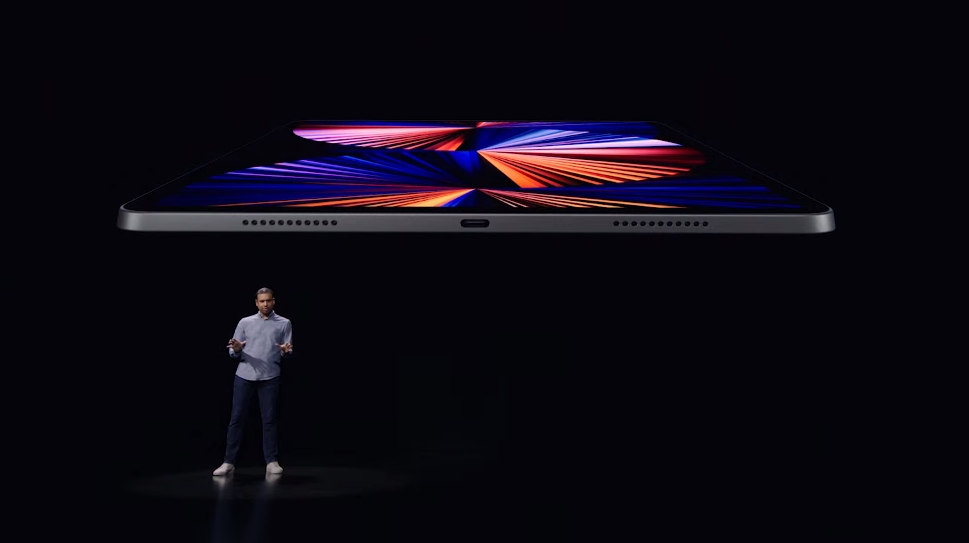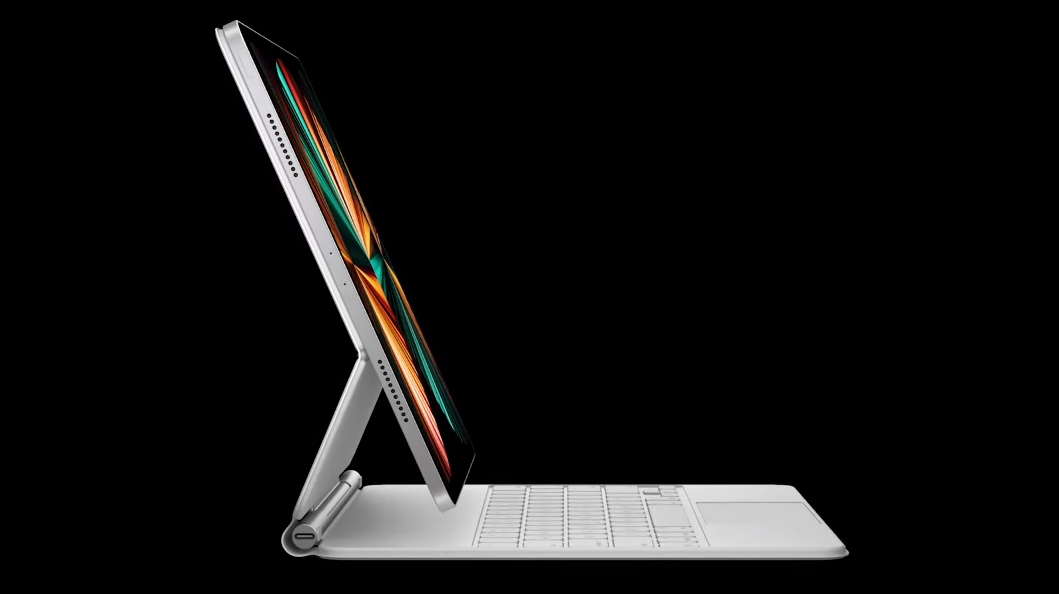The new iPad Pro 2021 could be the tablet that can actually replace your laptop
Opinion: M1 is the key

Apple events, like the ‘Spring Loaded’ one it recently held, can be a mixed bag, especially for those of us who are more interested in Macs and MacBooks than phones, tablets and credit cards, but I ended up really impressed.
While things got off to a bit of a shaky start for me (why am I watching Tim Cook hawk a credit card?), I soon became very impressed with what I was seeing.
I loved the new-look iMacs (even if some people aren’t impressed) – it was high time for Apple’s all-in-one to get a redesign – and getting the same M1 chip that powers the MacBook Air (M1, 2020), MacBook Pro 13-inch (M1, 2020) and Mac mini (M1, 2020) was not too surprising, but was very welcome all the same. I think the M1 chip is the most exciting thing Apple has done in a long time, so seeing it come to more Macs is great.
But what really impressed – and surprised – me was the new iPad Pro 2021. I’ve never been that interested in tablets, and have certainly never thought that one could replace a laptop (like many tablet makers, including Apple, have claimed in the past).
But Apple genuinely blew me away with the iPad Pro 2021 – and it’s all thanks to the M1 chip.
- These are the best tablets of 2021
- 7 things you might have missed from Apple's event
- We pick the best 2-in-1 laptops

Powered by M1
While I expected the new iMac to come with an M1, I never really thought Apple would put it in an iPad (mainly because I don’t think about iPads at all) – but the move was actually a masterstroke.
The M1 was Apple’s first attempt at making a chip for its MacBooks and Macs, after years of producing its own chips for its iPhone and iPads. Part of why it was so impressive was that it brought things we’ve come to expect from mobile devices – such as long battery lives (compared to laptops, at least) and super-fast boot times – to Apple’s PC and laptop range, while also offering enough power to offer excellent performance, even with demanding workloads like 8K video editing.
Sign up for breaking news, reviews, opinion, top tech deals, and more.
So, in a way, it makes perfect sense to bring the M1 to a mobile device, and this time offering the kind of performance you’d expect from a PC or laptop, but in a tablet form factor.
You see, the M1 chip that is now in the new iPad Pro 2021 is the same chip that powers the new MacBook Pro 13-inch. That’s kind of mind blowing.
And, as we’ve seen with the new Mac mini and new MacBook Air, which also use the same M1 chip, performance between the M1 powered devices is pretty close, with small things like thermals (how well the device keeps its hardware cool) affecting things slightly.
Apple claims that the M1 chip will lead to a 50% jump in processor performance compared to the iPad Pro 2020, and a 40% GPU performance jump over the same iPad Pro from 2020.
It means that there’s now the very real possibility of an iPad offering similar performance to a MacBook Pro. That is incredibly exciting – especially as the base model for the 11-inch iPad Pro 2021 is $799 / £749 / AU$1,199 and the 12.9-inch model is $1,099 / £999 / AU$1,649. That’s a fair bit cheaper than the MacBook Pro 13-inch’s $1,299 / £1,299 / AU$1,999 starting price, though of course you get a larger screen and more storage with that model.
If you want a true laptop-like experience with the new iPad Pro, then you’ll need a keyboard. The Magic Keyboard for iPad does the trick, and includes a built-in trackpad – but it’s also incredibly expensive, costing $299 for the 11-inch version and $349 for the 12.9-inch model. That means the iPad Pro suddenly becomes around the same price as the MacBook Pro 13-inch, unless you already have the Magic Keyboard for iPad. You can also use a cheaper third-party keyboard as well, of course.

Pros and cons
So, could the iPad Pro make me ditch my laptop? Amazingly, it could.
There’s still a load of reasons why you’d want an actual laptop – like the MacBook Pro 13-inch – over the iPad. You get a bigger screen, more robust form factor that’s easier to use on your lap, and macOS (or Windows 10, Linux or Chrome OS) remains a better operating system for multitasking on compared to iPadOS.
But, the new iPad Pro has advantages that the MacBook Pro (and many other laptops) lack. For a start, it’s much lighter.
It also has built in 5G in some models, which means you can connect to the internet without needing a Wi-Fi network. The screen is also touchscreen, something MacBooks lack (and Microsoft has called them out on).
Speaking of the screen, Apple talked up the new iPad Pro’s screen, with Mini LED technology, which it is calling Liquid Retina XDR, which offers 600 nits of peak brightness, a million to one contrast ratio and a 120Hz refresh rate. If it lives up to the hype, the screen of the new iPad Pro (2021) could handily beat the display on the MacBook Pro 13-inch – and many other laptops to boot.
I can’t wait to try it out. From what I’ve seen so far, the new iPad Pro (2021) really could be the first tablet device that could replace a laptop. I probably should be mad, but really, I’m excited.
- These are the best laptops of 2021

Matt is TechRadar's Managing Editor for Core Tech, looking after computing and mobile technology. Having written for a number of publications such as PC Plus, PC Format, T3 and Linux Format, there's no aspect of technology that Matt isn't passionate about, especially computing and PC gaming. He’s personally reviewed and used most of the laptops in our best laptops guide - and since joining TechRadar in 2014, he's reviewed over 250 laptops and computing accessories personally.